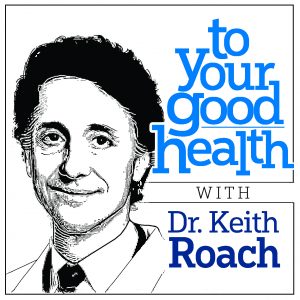TO YOUR GOOD HEALTH: Nonstop acid reflux? look at surgical options
By Dr. Keith Roach — August 16, 2021 DEAR DR. ROACH: I am a 78-year-old female who has suffered from acid reflux for many years and has been taking Prilosec (omeprazole) for at least 15 years. I have heard that it is not meant for longtime use. If I don’t take it, I have such heartburn I can’t sleep and am in misery all day and night. I recently attended a seminar on the new LINX surgery and hope to have it done. Do you have any information on the success of or problems after this surgery? — J.B.
DEAR DR. ROACH: I am a 78-year-old female who has suffered from acid reflux for many years and has been taking Prilosec (omeprazole) for at least 15 years. I have heard that it is not meant for longtime use. If I don’t take it, I have such heartburn I can’t sleep and am in misery all day and night. I recently attended a seminar on the new LINX surgery and hope to have it done. Do you have any information on the success of or problems after this surgery? — J.B.
ANSWER: The LINX device is a magnetic ring, placed by laparoscopic surgery, that helps increase the strength of the lower esophageal sphincter, the valve-like muscular structure at the junction of the esophagus and the stomach. This reduces reflux (backward movement) of stomach acid up into the esophagus. The procedure was very effective at reducing both heartburn symptoms (89 percent before procedure to 12 percent after) and the need for daily medicines like omeprazole (100 percent before to 15 percent after).
The device has not been in use for a very long time, so long-term safety data is unavailable. Some people had to have the devices removed because they eroded into the esophagus, but only 0.3 percent of devices were removed at four years.
There are other types of surgeries used to treat reflux, most of which are effective at reducing both symptoms and the need for medication. There are now options for treatment being done endoscopically (with an instrument placed through the mouth), without the need even for laparoscopic surgery (with the instrument being placed by small incisions through the skin).
My personal practice is to discuss medication treatments as well as surgical treatments for people with moderate to severe acid reflux. Surgery in younger people may have more benefit by preventing a lifetime of daily medication. People who do not get relief with medication are those who most clearly benefit from these kinds of procedures.
***
DEAR DR. ROACH: I am a 90-year-old man. My wife’s life was saved in 1952 with Red Cross blood. Since then, I have donated more than 31 gallons of blood. My blood is CMV-negative. They want me to donate more.
I had a CT scan after a fall, and a 1-cm ground-glass nodule was found in my lung. They are going to do another scan in six months to see if it is growing. The Red Cross said if I had cancer I should refrain from donating. What should I do? — J.J.B.
ANSWER: Based on the information you are giving me, it’s about 90 percent likely that this will not be cancer. A repeat scan to see if it is growing is a good idea.
Even in the unlikely event this is cancer, the likelihood of passing cancer cells along in a blood transfusion is very, very small. However, blood banks like the Red Cross are exceedingly careful to maintain a safe blood supply, and waiting six months to donate is safest.
Let me add my thanks to your selfless giving of a precious, life-saving resource — your blood — which is especially valuable to people with immune system disease given the lack of the common pathogen cytomegalovirus, which can cause serious disease in people after cancer chemotherapy.
Dr. Roach regrets that he is unable to answer individual questions, but will incorporate them in the column whenever possible. Readers may email questions to ToYourGoodHealth@med.cornell.edu.
© 2021 North America Synd., Inc.
All Rights Reserved







